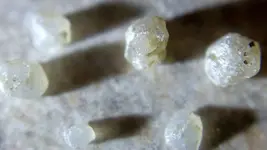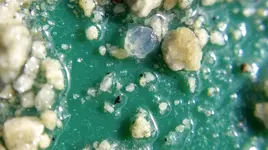jmkesler
Jr. Member
I am posting a question based on comment posted to my blue clay video posted a month or so ago. (found here: http://www.treasurenet.com/forums/gold-prospecting/319452-blue-lead-need-help.html). The comment suggested the blue layer could be a part of a decomposing kimberlite pipe. After reading it, I did a lot of research and, indeed, there is a layer of yellow soil, yellow dry clay and yellow to tan sedimentary rock above the blue clay. Not in all places, but many. The light yellow soil becomes thick sticky yellow clay as soon as water touches it and the rock just crumbles when pressured by hand or hammer. The rock I show in the video has small blue-ish crystals in it. I found it and others in the creek. The crystals are in the blue clay grit layer as well. The little crystals appear blue until you remove them from the rock or the green pan. Once removed they are white.
Are they diamonds?
If so, how do I find out?
Would it be worth getting one of those short wavelength UV lights?


Here is a video of the rock, the rock in the pan after crushing and close ups of the crushed ore after washing.
You'll need to skip to this time mark to see the crushed rock in the pan: 1:22.... I was a little long on showing the rock.
Thanks for any help you guys might could lend.
Jeremy
Are they diamonds?
If so, how do I find out?
Would it be worth getting one of those short wavelength UV lights?


Here is a video of the rock, the rock in the pan after crushing and close ups of the crushed ore after washing.
You'll need to skip to this time mark to see the crushed rock in the pan: 1:22.... I was a little long on showing the rock.
Thanks for any help you guys might could lend.
Jeremy
Last edited:






